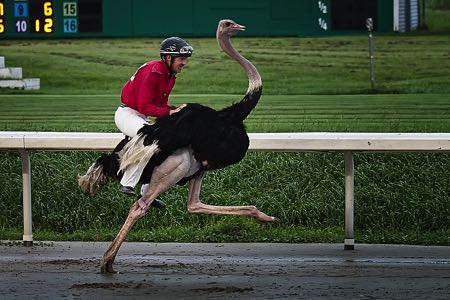
Even those with little more than a passing interest in gambling will know about greyhound racing and horse racing. The latter sport has been a popular one in the United Kingdom for centuries, whilst the latter hit its peak in the 1940s but remains popular today. The temptation might be to assume that they’re the only sports in which animals are raced for our entertainment, but that is definitely not the case. There are some animal races that make sense, whilst others are little bit more off the beaten track. Either way, being able to have a flutter on them is key.
Of course, not all of them are things that you can bet on in the United Kingdom or via bookmakers. Pigeon racing is a good example of this, with events rarely featuring on the list of sports that you can have a wager on with even the biggest bookmakers around. Even so, if you know where to look then you’ll be able to have a bet on any number of weird and whacky racing events, from Shetland ponies to zebras. Here we’ll have a look at the mad world of animals that are raced by humans for pleasure, as well as betting opportunities.
Races from Around the World
As you might imagine, we’re looking at races from all over the world. The reality is that the British are mildly prudish when it comes to the races that they’re willing to watch, whilst the same sort of attitudes aren’t as prominent in other countries. That being said, we’re certainly not advocating the racing of animals that would be cruel for the participants. Of course, there are plenty that would say that both horse and greyhound racing are cruel activities, so it is difficult to find animals races that no one has a problem with.
Sled Dog Racing
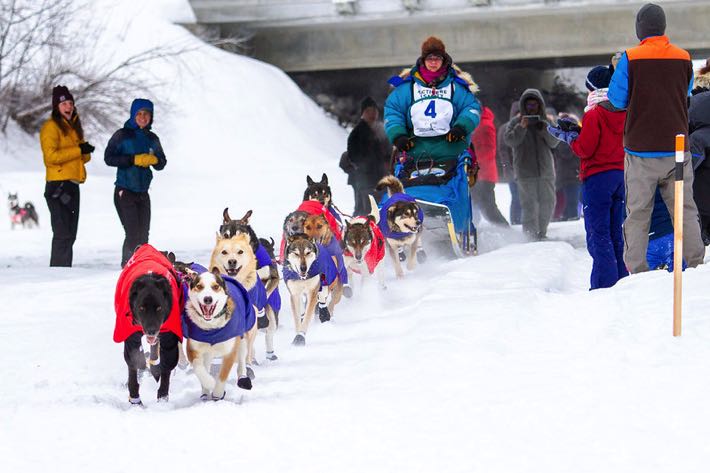
Ok, so this doesn’t really tick the box of racing not involving canines, but when most people say they’re ‘off to the dogs’ they don’t put on their thermal gear and ski boots. Yet in the likes of the United States of America, Canada and Russia, sled dog racing is remarkably popular. As you might expect, it is a winter sport that asks teams of sled dogs to pull a sled, on which a ‘musher’ stands, around a course. The team that completes a marked out course in the shortest amount of time is declared to be the winning one.
Believe it or not, sled dog racing has gained Olympic approval, of sorts. It was a demonstration during the Winter Olympics of 1932, which was hosted at Lake Placid in New York. It was also a demonstration sport when the winter Olympics were hosted by Oslo, then again in 1994 when the event shifted to Lillehammer. Though it has never gained official sport status, the mere fact that it has taken place at three different Winter Olympics is enough to mean that it is a sport that is taken very seriously.
Pigeon Racing
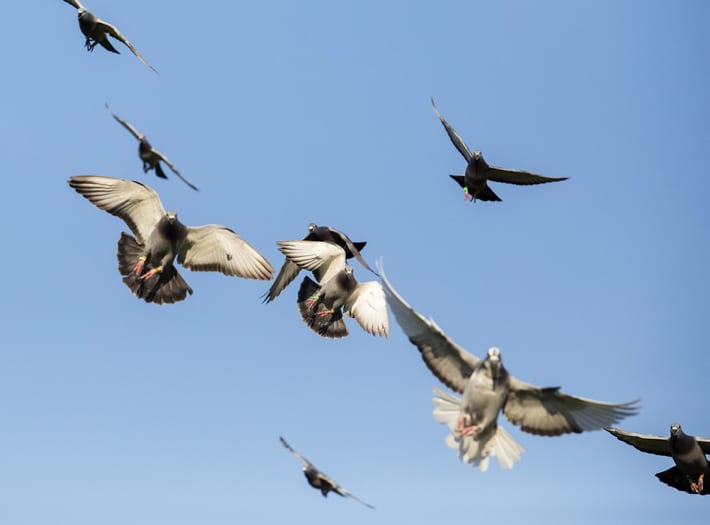
Though some people will struggle with this concept, pigeons are good at doing more than just pooing on a car window. Though there isn’t any specific proof of this, it is believed that the sport of pigeon racing might date back as far as 220 AD. With that in mind, it is entirely fair to suggest that this is one of the classic things that has taken place over the years, even if it was decided in the 1990s that it isn’t actually a sport. That was the decision take by a Customs and Excise tribunal, which ruffled a few feathers within the pigeon racing community.
Whether it’s considered a sport or not, it involves pigeons racing as far as 500 miles and being timed on their journeys. In the UK, six different independent bodies regulate it, with the Royal Pigeon Association being probably the most famous one. The British Royal Family has been involved in pigeon racing since 1886, thanks to a gift of racing pigeon breeding stock from King Leopold II of Belgian. In 1990, a pigeon owned by Queen Elizabeth II won a race to cement the family’s love of the sport, which is sadly declining today.
Ostrich Races

Given the fact that ostriches are capable of exceeding speeds of 40 miles per hour, it is perhaps no surprise that some bright spark decided to race them at some point. The large, flightless birds are native to Africa and have legs that can cover as much as 16 feet in a stride. The sport is common in the country of their origin, whilst it also tends to take place in the United States of America. Arizona is the state most closely associated with the sport, though it also takes place in Nevada, New Orleans and Iowa, amongst others.
It is not a simple matter of releasing the ostriches and seeing who wins. Instead, wagons are hitched up to them with people in the back. They control the bird using reins in a similar manner to how horses are controlled. Sometimes there is no wagon and instead the ‘jockeys’ just get onto the back of the birds and control them with their legs. As you might imagine, not everyone believes ostrich racing is a good sport and there is plenty of opposition to it. Even so, there is an ostrich racing venue in Brighton & Hove in the UK.
Camel Racing
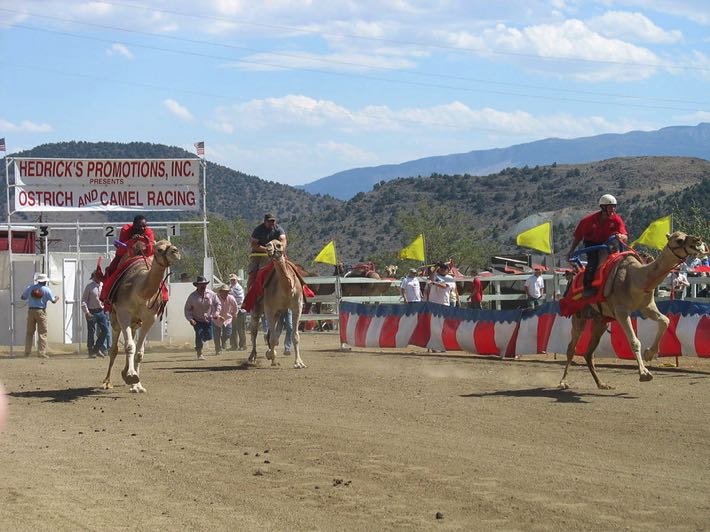
Just as it’s no surprise that someone found a way to race ostriches, it is also not exactly shocking that people decided to race the ‘horse designed by committee’ that is the camel. It is most popular in the Middle East, though camel racing also takes place in Australia. In the United Arab Emirates, the tracks on which camel racing takes place can be as long as three miles. Once they’re released, the owners drive after them in a group of SUVs, making sure that they’re following the course properly and running quickly.
There are novelty camel races in the US, but the sport has yet to make it to the United Kingdom. Interesting, adults race the camels in the United States and the UAE, but in Australia they are raced by miniature robots. This is because children would race them ideally, but it was decided that this is cruel and goes against both child welfare and trafficking laws. Child jockeys have been banned by many countries, so instead people have to place their bets on small robots successfully controlling the camels.
Sheep Racing
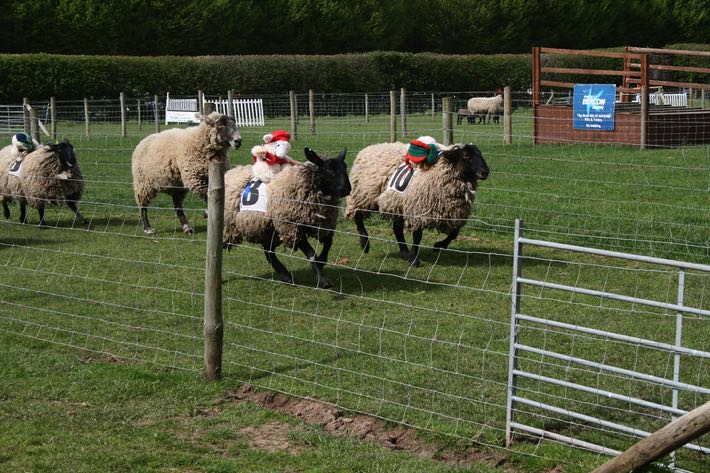
Head to Hoo Farm in England between Monday and Thursday in April, May, June, July and September and there’s a good chance that you’ll find yourself watching some sheep racing. The sheep themselves don’t carry human jockeys, instead having teddy bears strapped to their back in order to give the look of a race similar to what you might expect to see at Aintree or Cheltenham. You can even head to the company’s own Tote to place a bet, with a commentator talking you through what’s taking place on the course.
Because animal welfare is at the forefront of Hoo Farm, the racing is weather dependent. Even so, they were the first to offer sheep racing and it is an activity that has been copied by other venues since. It is all done in a spirit of fun and the sheep choose to jump the obstacles themselves, but the farm has taken advantage of its popularity. Looking at the boards, you’ll soon notice that there are plenty of advertisements for some well-known companies adorning the fences that the teddy bear-ridden sheep are jumping.
Hog Racing
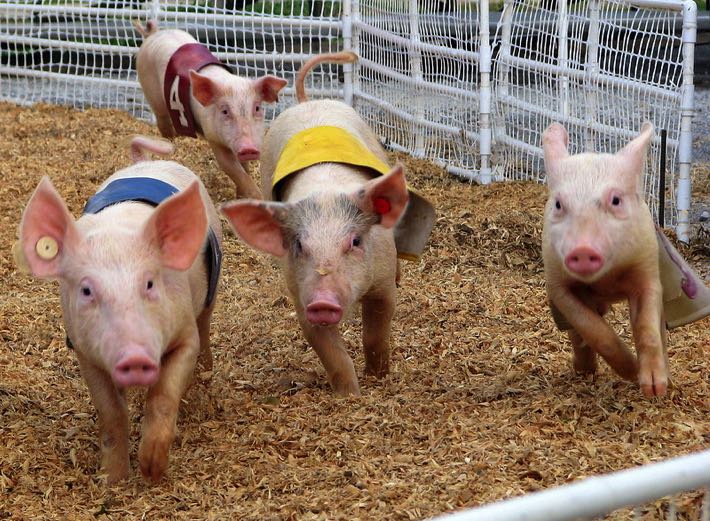
It has long been believed that pigs are amongst the most intelligent animals in the world, so perhaps they have arranged to take a cut of any money made by the bookmakers that offer bets on the outcome of their races. Common in numerous different countries, hog racing tends to involve juvenile pigs racing around a small area of dirt, gravel or fake grass. The races are family-friendly affairs, usually taking place for fun rather than for any sort of extremely serious betting shenanigans.
Often an attraction at country fairs, the pigs are adorned with vests that are different colours and display their numbers so that the audience can tell them apart. They often have to negotiate numerous different obstacles, including tyres, tunnels and hay bales. If you’re hoping to catch sight of some pig racing, you’ll want to head to Ireland, the UK, Australia or the United States of America. As with so many other races involving animals, hog racing has been the subject of some controversy over the years thanks to the idea that it is cruel.
Dachshund Racing
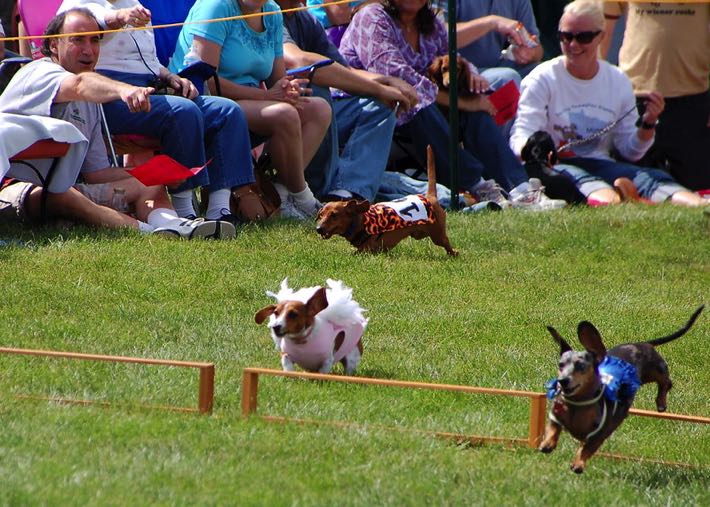
Another example of a sport that doesn’t actually tick the box of not involving dogs, Dachshund racing is nevertheless worth mentioning for the simple fact of how bizarre it is. It took place for the first time in Australia during the 1970s, done as a bit of fun that caught the imagination. Fast-forward 20 years and an American commercial for beer used dog racing as a comedy sport but it was enough to capture the imagination of the public. Unfortunately, Dachshunds have a predisposition for bad backs, so it is slightly controversial.
Though the controversy is unarguable, ‘Weiner dog racing’, as it is sometimes called, still takes place in numerous different American locations. They tend to be run over either 25 yards or 50 yards, with many different surfaces being used. Typically taking place for fundraising events, they routinely bring in huge crowds that want to watch the small and long dogs run around a course and try to be faster than each other. It is common for some dogs to fail to complete the course, either running to see their owners or else saying hello to one another.
Snail Racing
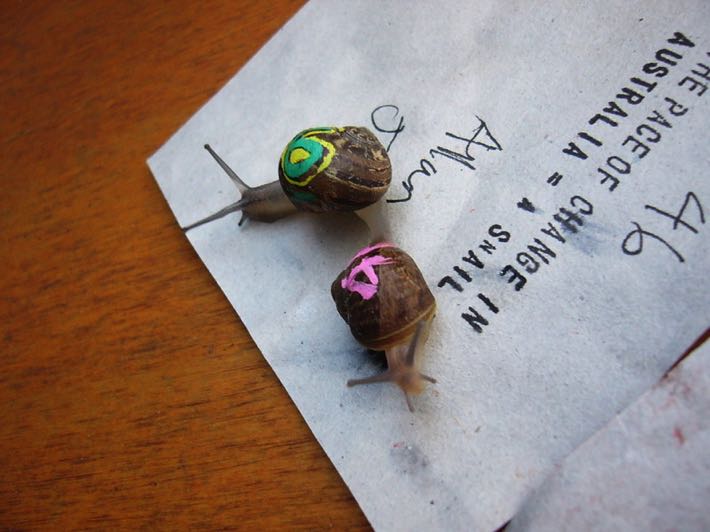
Just as there was an inevitability to ostriches being made to race when it became clear how quickly they could run, the fact that snails are so notoriously slow meant that it was equally obvious that someone was going to pit some against one another at some point. The World Snail Racing Championships takes place every June in Norfolk in the United Kingdom, with the rules being simple enough: the entrants have a sticker attached to them to identify them before they’re placed in a circle with a radius of 33 centimetres. The first snail to reach the edge of the circle is the winner.
The world record for making it the edge of the circle was set in 1995 when a snail with the imaginative name of Archie the Snail made it there in exactly two minutes. Only European common garden snails can take part in the event, ruling out the use of larger foreign snails that can move more quickly. It is fair to say that this isn’t one of the more action-packed races that is on our list, but it is still loved by those that turn up to watch the Championship every year. The good news is that you’ll have time to make a brew if it gets a bit chilly.